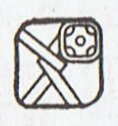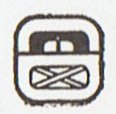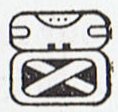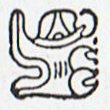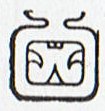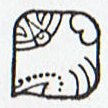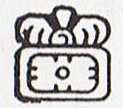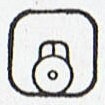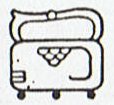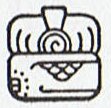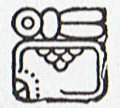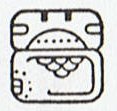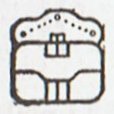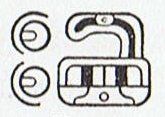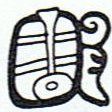2. There is a Mayan calendar which can be of use for us, and which I have put together from information in An Outline of Maya Glyphs by William Gates. Each of its 18 months 'carries' 20 days, and in addition there is a 19th month with only 5 days which is located at winter solstice:
I have coloured red those 10 months which I believe
represent summer and black the last 5-day-month (19 Vayeb).
The last of the redmarked months (counted from a beginning
with 1 Pop beyond winter solstice) is 14 Kankin.
Number 14 occurs also in 140 (= 10 * 14) in our table below:
More important, I cannot but notice the resemblance with Eb7-9--10:
Moan is a bird flying in the night, some kind of owl. Its head probably indicates that summer has ended, the arrival of atumn. In the picture for 14 Kankin a descending Sun sign is drawn at center bottom. The 'trunk of the tree' above could be the path of Sun. In Eb7-9 the 'tree' has also sunk low. And 'haga niu' in Eb7-10 is the 'root' of a new season. 15 Moan is 'one more' than 14 Kankin. Kankin is Yucatec, and in other Mayan languages the corresponding name is Uniu (or Uneu). Glyphs and inscriptions show this month to be a kind of 'Tree' month:
(The glyphs at right are copied from David Humiston Kelley, Deciphering the Maya Script.) Uniu is very close to niu, and I guess u-niu could mean 'the niu of Moon' - because U (formed like È) was the name of Moon for the Mayans, . The rightmost of the three glyphs above is inscriptional and I imagine it could be the skull of One Hunaphu which is drawn up in the tree. Kankin means 'skeleton ribs', which I associate with a cranium (as in the dry old skull - dry old calabash - of One Hunaphu). Therefore I think we should read together Eb7-9 with the preceding Eb7-8 (which has a dry old sugar-cane, tôa, in its center). But obviously also Eb7-10 must be conntected to Eb7-9, that we can conclude from the Uniu glyphs above:
If we count from 1 Pop there are 15 * 20 = 300 days up to and including 15 Moan. Counting the months as 20 days only was not an unknown method in Polynesia, the inhabitants on Gilbert Islands never counted the months beyond its 20th night: "The Gilbert Islanders are Polynesians, having emigrated, according to their traditions, from Upolu, Samoa, which they look upon as te buto (Maori pito), the Navel of the World. They never counted the nights of the Moon beyond the twentieth, so far as Grimble was able to ascertain, and in the vagueness of their lunar calendar bore no resemblance to their Micronesian neighbors of the Carolines ... One of the names for east, Makai-oa, was said to be the name of a far eastern land, not an island, which their navigators had visited in ancient times. Tradition called this great land 'the containing wall of the sea, beyond the eastern horizon, a continous land spreading over north, south, and middle, having a marvelous store of all sorts of food, high mountains and rivers'. It was also called Maia-wa (wa being 'space, distant'). This is a clear reference to ancient voyages to the American coast from which the Polynesians are thought to have introduced the sweet potato into the Pacific area. The similarity of Maia to Maya may be more than a coincidence." (Makemson, a.a.) |
||||||||||||||||||||||||||||||||||||||||||||||||||||||||||||||||||||||||||||||||||||
